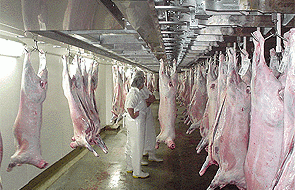
The delayed and much anticipated final result for Silver Fern Farms’ 2014 year has made it into the public arena in time for Christmas.
Although it has squeaked in just above breakeven for the year at $1.8 million pre-tax and $0.5 million after tax, this is worse than the original guidance of $5-7 million announced at the end of October.
The difference is accounted for by a $3.3 million provision following a ruling by the Employment Relations Authority in relation to a technical redundancy arising from the closure of the Silverstream plant in 2013. From recollection SFF laid off staff on the basis of a seasonal shutdown, although at the time the company announced that it was unlikely to reopen unless stock numbers increased significantly.
The ERA’s ruling suggests this automatically implies a technical redundancy situation, whereas SFF believes not.
The company has sensibly chosen (requested by the auditors?) to make the provision “while we consider our next steps over the coming month” according to chairman Rob Hewett.
The time taken to reach this decision indicates the auditors must have refused to sign the accounts without this provision.
Publicity surrounding the announcement over the last 24 hours, including positive statements by CEO Dean Hamilton, has sought to paint a positive picture of what must have been an irritating downgrade of the previous forecast.
Hamilton front footed the issue of the capital restructure which will be addressed by Goldman Sachs’ recommendations to the board. Any rumours the company is not in a stable position were being promoted by SFF’s competitors, according to Hamilton.
He also suggested sale of assets as a means of debt reduction.
Apart from the supply deal with MacDonalds, Hewett told me there is about $50 million of dairy beef running around plus some surplus land on the Belfast plant site which can be converted into cash for further debt reduction.
I respect the company’s efforts to emphasise the positives from what have been a pretty torrid three years with combined pre-tax losses of $77 million, but, as Hewett says, 2014 is “a signpost on the path to where we need to get to.”
At least a profit, however small, is a profit and more positively net debt was down by $99 million at year’s end and working capital was $55 million or 19% lower.
Although stable commodity markets, the company’s new regional structure and growth in high value products were cited as contributors to the improved performance, the main reason was inventory clearance at better market prices.
The build up of inventory across two financial years saw SFF performing much worse than its main competitors who had one bad year, but not two.
Now that overhang has been cleared, SFF should now be able to avoid a repeat occurrence, having announced previously a policy of meeting the market in future.
The current season has started better than last year and the company believes it is well placed to take advantage of its capacity.
Nevertheless the key issues are what the capital structure options will be when they are communicated to the board for its consideration and how the new capital structure will be achieved without loss of farmer control.

We welcome your comments below. If you are not already registered, please register to comment.
Remember we welcome robust, respectful and insightful debate. We don't welcome abusive or defamatory comments and will de-register those repeatedly making such comments. Our current comment policy is here.